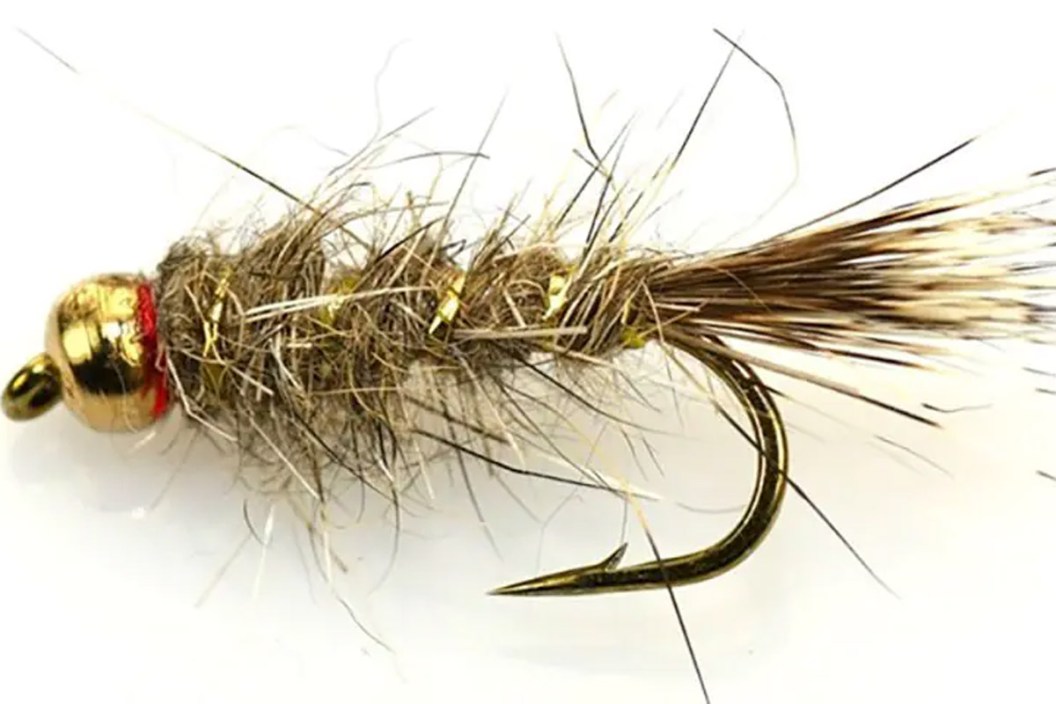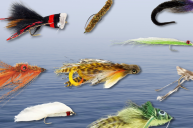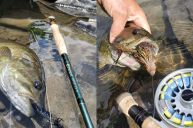Which flies for trout have staked their claim as the best of the best?
A list of the "10 best flies for trout fishing" could almost double as a list for "10 best flies," period.
There's a reason that trout are the target of choice for most fly anglers. Not only are they common in bodies of water all over the country, but they also respond well to a plethora of different fly patterns. We've compiled some of the most successful trout flies.
Whether you're after brown trout, rainbows, or the native cutthroat, these are the picks to toss with your fly rods and stand the best chance of success.
View the photos below and see if you agree that these top 10 choices of flies for trout should be in your fly box.
1. Parachute Adams

Getty: SSI-DUKE
The Adams is rather widely considered to be the most essential fishing fly, period. That fact counts for double in the trout fishing realm, where the Adams Parachute is quite simply indispensable. The fly comes in a variety of different variations and sizes, and if push comes to shove and you can only have one version of the Adams in your tackle box, for trout fishing, the best design is the Parachute Adams.
It's a dry fly that can hook trout on the surface of rivers and streams throughout America during virtually any time of year—even seasons that are not traditionally considered to be hotspots for trout anglers. This is because the Parachute Adams bears a passing resemblance to a lot of different insect types, making it one of the most versatile flies in any trout angler's arsenal.
2. Woolly Bugger

Getty: inhauscreative
Despite the Parachute Adams' status as one of the most versatile and oft-seen flies in all of trout fishing, there are plenty of anglers who would place it at number two on their "best trout flies" list. The beneficiary of that move in most cases would be the Woolly Bugger, a streamer that has the versatility below the surface that the Parachute Adams has above it.
From nymphs to leeches and beyond, the Bugger is adept at imitating plenty of underwater prey, and the addition of different colors and beads to the design only adds to its usefulness. Any good fly shop is going to carry them, too.
3. Elk Hair Caddis
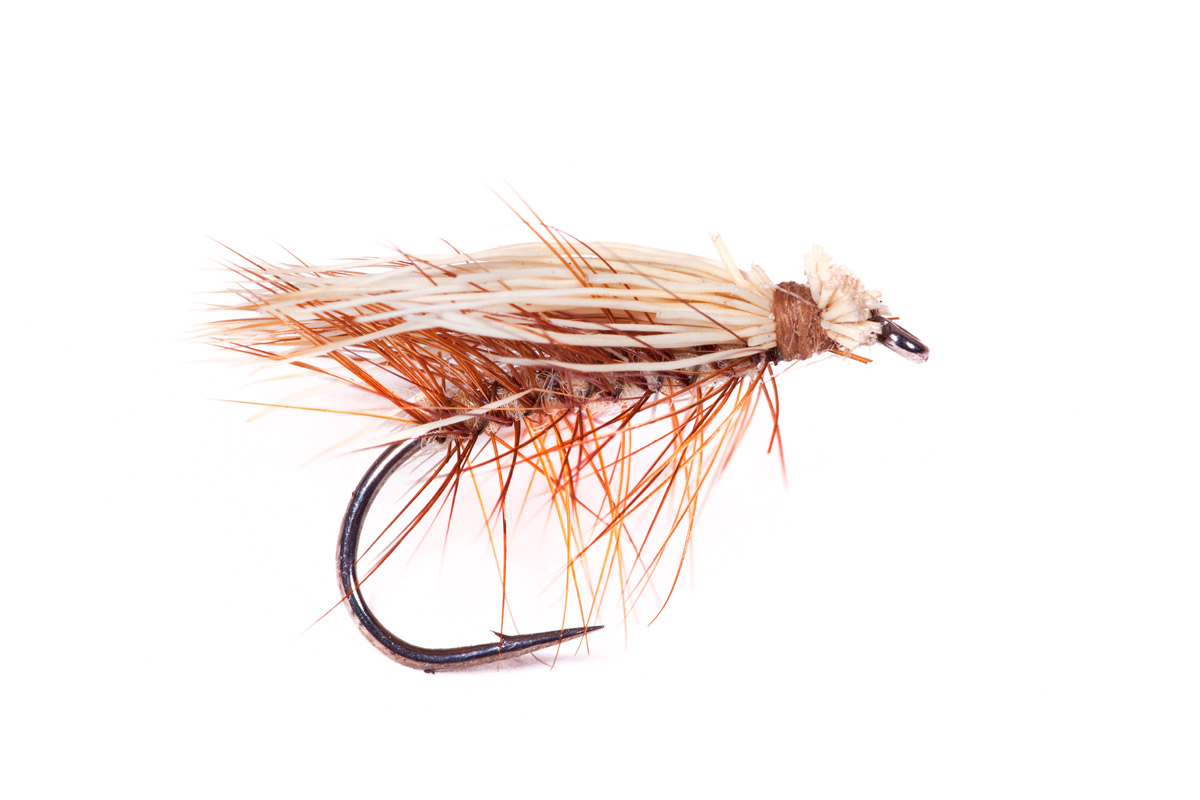
Getty: KeithSzafranski
As a general purpose dry fly, the Elk Hair Caddis is often forced to play second fiddle to the Parachute Adams. There's a reason: the Adams can be used to catch virtually any type of fish in any type of environment. However, for those whose interest in fly fishing rests almost exclusively in catching trout, the Elk Hair Caddis may just take the gold medal as the most essential dry fly out there.
In fact, the Elk Hair Caddis has become arguably the most popular fly in fishing shops simply because trout fall for its distinctive and realistic appearance every time.
4. Bunny Leech
The role that the Elk Hair Caddis plays for the Parachute Adams in the dry fly department is arguably similar to the role that the Bunny Leech fly plays to the Woolly Bugger. While many would swear up and down that the marabou tail and chenille body of the Woolly Bugger is the perfect combination for catching trout below the surface, there are also plenty of anglers who would tell you that rabbit fur is the more effective material simply because it offers more movement and visual flare in the water.
Think about it: there are really no flies more visually impressive than rabbit fur flies, and if you think that, you can bet that the fish do as well.
5. Gold-Ribbed Hare's Ear
Speaking of wet flies with visual flare, the Gold-Ribbed Hare's Ear is yet another classic fly that should have a place in any trout angler's tackle box. The defining characteristic of the fly—other than its flashy golden sheen—is its sheer versatility.
In different sizes, the Gold-Ribbed Hare's Ear can be fished as a caddis fly, a scud, a nymph, a mayfly, a stonefly, and who knows how many other species. In short, it will catch trout no matter what type of insect they have a hankering for.
6. Crayfish
Not all trout anglers remember a Crayfish fly when stocking their tackle box with wet flies, but it can actually prove to be a secret weapon for when other flies just aren't doing the trick. This is because the Crayfish fly adds a completely different type of prey species to your imitative capabilities.
In saltwater, everyone knows that crustacean flies are important. In freshwater, that fact is easy to forget, but crayfish are everywhere, and a fly that imitates them is an important thing to have in your box. Strip it along the seafloor to incite particularly predatory reactions in fish.
7. Pheasant Tail Nymph
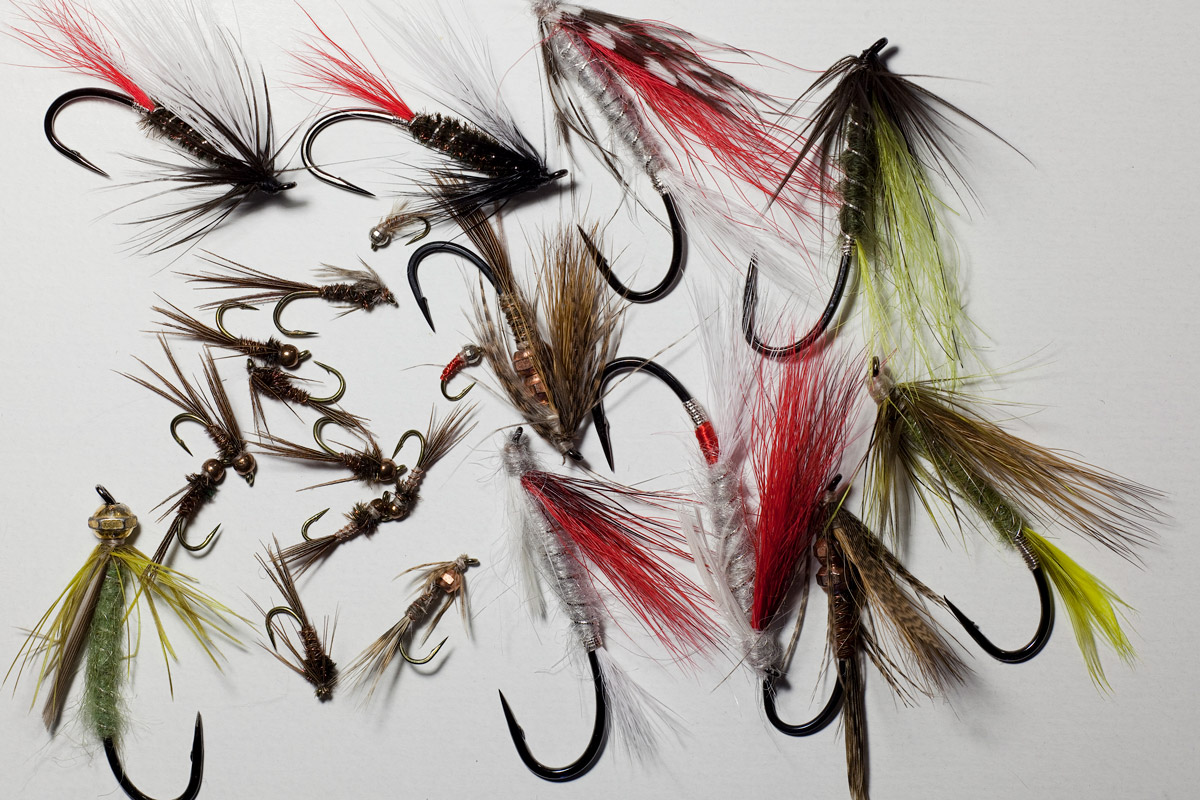
Getty: jaypetersen
The Pheasant Tail Nymph fly functions similarly to the Gold-Ribbed Hare's Ear, using its sinking nymph distinction to mimic a wide variety of bait species in the eyes of trout. From a visual perspective, it's not as flashy as the Hare's Ear.
Still, this fly has been proven over the years as an effective and reliable means of catching fish, and that's ultimately the most important thing. A bead head pheasant tail can work wonders, too.
8. San Juan Worm
Like the Crayfish, the San Juan Worm is a fly pattern that is, for whatever reason, often forgotten by anglers. This could be because anglers get so caught up in patterns that mimic insects and underwater baitfish that they forget about or spurn the original baiting solution: the worm.
Or, it could be the fly's exotic roots in New Mexico's San Juan River. Whatever the reason for this oversight, the San Juan Worm is a nymph fly that deserves to be in your tackle box. Its simplistic red design may not look like much, but it does look like a worm and it will fool trout.
9. Muddler Minnow

Getty: joshuaraineyphotography
Many would place the Clouser Minnow - one of the default flies for any type of angler—on this list simply for its significance in fly fishing as a whole. However, the Muddler Minnow is, by many accounts, a more effective means for landing trout than its clouser cousin. Fish this streamer as a sculpin or a grasshopper in virtually any lake, river, or stream in America. If you don't see results, then you can consider switching it out for the clouser.
10. Soft Hackle
Slot number 10 could play host to a seemingly infinite number of trout flies. We went with the Soft Hackle, a wet fly that gives the Woolly Bugger a run for its money in the number of species it can successfully imitate. Swing this through a run and you may be surprised at the success.
